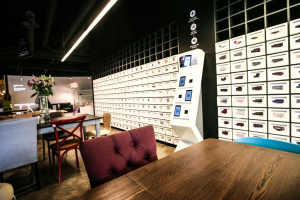NFC The Magic Touch
In 2016 NFC is now integral to payment systems we know & love & are starting to use more & more. (Think Apple Pay.) Because of this, mobile payment continues to be the primary driver for NFC deployments, Barclaycard in particular in the UK.
NFC technology remains a pretty-unclear subject however especially in retail even in 2016. Clients, consumers & manufacturers are still understanding how this widespread yet underused technology will change the retail landscape in terms of customer dynamics, people wondering “have I missed anything with this NFC thing” and of course, Apple controlling adoption in its handsets through NFC functionality restriction, make it a hard subject to talk about & fully understand. But having said all that, things are happening and outside of payment systems we’re starting to see adoption pick up.
In Retail, to begin with though, there’s three aspects of NFC which need to be understood;
1) how widespread the technology is
2) where we are on the adoption curve and
3) how will NFC improve the overall retail experience?
To begin to answer any of those, we need to think about NFC in retail scenarios.
NFC can greatly improve customer loyalty, using NFC to identify customers the minute they walk into your store. Customers tap their phones at the entrance, an NFC ‘check-in’ if you will, so stores can then see who’s there and at what time. That’s a great user-case for loyalty tracking right there.

The one undeniable truth is NFC is a pretty sexy technology. Tap two NFC devices together, and images, files, money and more get transferred between the two. Customers think this is fantastic, retailers think ‘smartphone to POS here’’ and there you go, the retail scenario is set up.
Although intuitive and relatively simple technology, a Berg insight study I managed to get my hands on showed that NFC enabled handset shipments reached three quarters of a billion in 2015. This was up approx. half a billion in 2014 (this particular research from ISH Technology). So, prediction by 2020 is that there’ll be around 2.2 billion NFC enabled devices in the wild, and that makes things pretty exciting.
Orange did something a while back, where customers tap NFC equipped posters to get discount vouchers they could redeem at restaurants.
So why Tag a product with NFC? How widespread is this technology?
The cost of tagging a product with NFC in comparison from the potential sales conversion is almost negligible. NFC allows the customer to interact with a product far more extensively than they would normally. NFC can be applied to any type of product. I’m staggered Supermarkets don’t make more use of NFC tagging, what with special offers, recipes & such like. NFC is fab for providing this type of relevant ‘bite-size’ pieces of information.
Other benefits of product tagging can include:
- Customer wishlists
- Ordering an out of stock item
- Providing information on alternative products
- Creating an online account
Cloud Tags seem to be the big players in NFC retail & I love this concept of the ‘connected store’.
As you can see they have some pretty meaty clients, so that does suggest there’s good adoption for NFC in this space.
Where are we on the adoption curve?
The NFC Forum (those who govern & dictate how NFC technology works) have several great whitepapers covering NFC in ‘smart’ posters, public transport, and in air travel. We are seemingly adopting this technology more & more in large sectors, but changing consumer behaviour at granular level is still tricky. It’s happened with mobile payments & that’s helped in other areas of Near Field, but people are still comfortable doing stuff a certain way. Geoffrey Moore call’s this a “crossing the chasm” where many technologies fail. Once there is momentum an ‘early majority’ starts to form. Then the rest of the adoption curve plays out as normal.

I personally believe as soon as NFC is opened in IOS devices, we’ll see an utter adoption explosion in the industry.
How does NFC improve the retail experience overall?
Anything which makes things easier for people will always win out eventually. Contextually sensitive and relevant information for products is completely useful. Loyalty driven special offers have huge benefit & of course, anything which reduces friction in any transaction is going to help. Consider the following scenario;
You approach a store, proximity aware signage customizes a call to action sales offer as you get to the store front, in effect inviting you in. You’re asked to tap an NFC tag to check in to the store so the store can track your walk pattern & dwell points, in return you are given a 3% discount on anything bought now or in the future.
As you wander around you’re tapping products with your NFC handset to learn specific information about them, rich information you wouldn’t normally get without stopping and firing up Google (so friction here is greatly reduced). You select a couple of products, to take to the payment area. You want to see how one product (a jacket) looks on you, standing in front of a camera equipped mirror display, a picture is taken of you, you tap your product on the same mirror to load that product as an overlay over the top and you’ve given a view of that garment on ‘you’. You’re then able to cycle through a myriad of textures & colours so you can be sure this is the product for you.
Once at the payment area, you can simply tap to pay, your credit card automatically being debited with your 3% discount earnt at the door.
So what if you’re the retailer? Well, you’ve got rich analytics of the person above who wandered around your store (thanks to both RFID device tracking and way pointing), CloudTag’s architecture has given you dwell time, pathing anlaysis and top product data insight and of course, the customers information is available for in-store remarketing purposes as you see fit. With very little in the way of ‘visible’ technology or friction, NFC is going to have more and more a part to play in how we use retail spaces.




